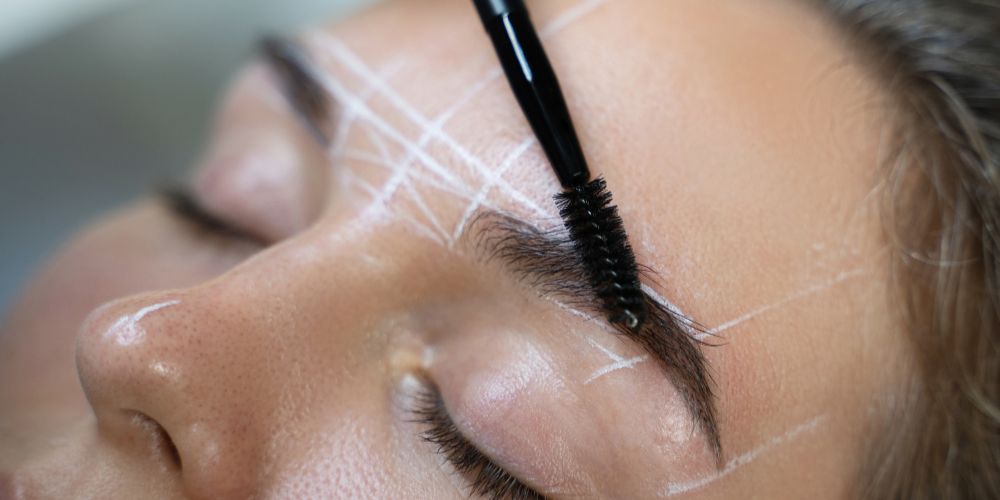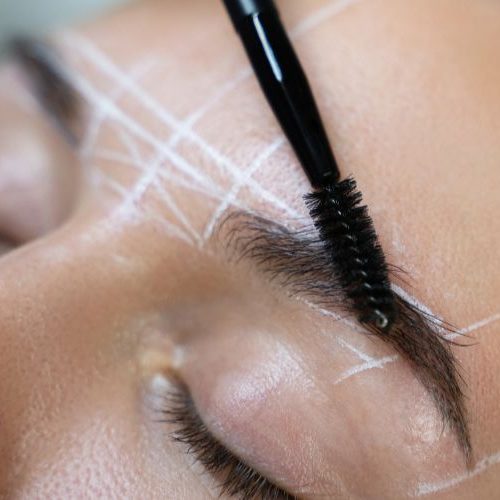Maison » Eyebrow Transplant for Symmetry: How It Can Correct Uneven Brows


Eyebrow transplant in Turkey is a specialized, meticulous procedure used to restore or create eyebrows by placement of hair grafts. The technique is an evolution from other hair transplantation techniques and an extension of the procedures performed to create a scalp hairline and to restore or enhance eyelashes. Eyebrow transplants, especially in Asian patients, have become quite popular in recent years. Over-plucking or waxing, hormonal imbalances, drugs, alopecia areata, or thyroid-related disorders are some of the reasons for people to lose their eyebrows. Transplanting hair to the eyebrow area is the ultimate solution for such patients. Shaping the eyebrows is important for almost all patients, and they must be cared for properly to achieve good results.
Although many other methods to enhance the brow, such as makeup, tattoos, and the latest microblading, can minimize an unnatural look or improve the appearance of the brow area, they do not mimic the natural brow as a true hair transplant does. Eyebrow transplant in Turkey techniques have become very refined, precise, and natural and continue to grow in popularity. Eyebrow transplant can truly make an impact by emphasizing the eyes and rejuvenating the face. It goes without saying that the importance of seeking a qualified professional with specific experience in these procedures is paramount, especially when a woman is attempting to improve her appearance. Eyebrow transplant for symmetry is used in people who have thinning eyebrows, very little or no eyebrows for certain conditions, as well as for burn victims who lost part of their brow because of injury. The lack of one brow is usually a result of genetics. However, if only one brow is affected, individuals are not likely to have a brow transplant. Results are still best when the hair matches the texture of a natural eyebrow. If hair loss is determined to be hereditary, however, matching the brow’s original hair can be very difficult.
Uneven brows can be caused by genetics, aging, accidental scars, previous beauty procedures, and medical conditions. Some people develop lighter brows during their 30s and 40s due to the decreasing number of hair follicles. The hair grows thinner with age, and the number of hair strands can shed down to 50% thinner than the original diameter. Uneven brows can be an aesthetic problem, leading to asymmetry on the face, while also psychologically affecting the individual by lowering self-esteem. Facial symmetry plays an integral part in defining one’s aesthetics and has been found to be preferred in the guidelines of beauty in various cultures around the world. Brow hair plays a defining role in the aesthetics of the face. When it comes to the emotional and psychological aspects, the eyes and the eyebrow region are said to be the most communicative parts of individuals. Thus, eyebrow hair has always been considered a protective shield for the eyes. Any missing hair, incomplete look, or patch in this area can lead to a feeling of inferiority in the individual. Uneven brows arise due to various reasons. By identifying the reason for the problem, more satisfactory results can be obtained from correcting uneven brows. Eyebrows are an essential component of non-verbal communication, helping to define the expression and identity of an individual. When a patient requests correction, even after minor asymmetry in their brows, it is of utmost importance to be considered seriously to maintain the aesthetic harmony of the individual.
Asymmetric brows are a source of insecurity for many people. Uneven brows can result from overzealous plucking or an eyebrow wax that goes awry. They can also result from a genetic predisposition where one eyebrow lies slightly lower than the other, causing the face to look unbalanced. One of the beautifully fluid aspects of the human face is its gentle unevenness – there is no such thing as a 100% symmetrical face. However, this type of asymmetry does not worry many people. For some, the brow unevenness is something that has bothered them for many years and can sometimes cause a concern that the brow hairs might not have a symmetrical growth pattern.
For people concerned about eyebrow transplant for symmetry is often the best unnoticeable solution. Before fix asymmetrical eyebrows with transplant, if a patient is concerned about a possible brow-growing pattern, an experienced hair restoration physician will look under the microscopic exam and discuss with you what is possible during your personalized consultation. At this time, a dermatologist specialist for scalp hair restoration will be able to look under the microscope to tell which brow choice is possible and optically create a potential brow for you. There are two methods to fix asymmetrical eyebrows with transplant: one called FUE and the other FUT.
Advantages: a greater number of hairs are created, and therefore the cost per hair is lower. Risks: patients may have better freedom of choice in other body hair or scalp donor hair for a potential eyebrow hair loss condition. Healing and Recovery: this is the same for the same procedure for the scalp; scabs may take 2-3 weeks to heal. The set of hairs will change after 1 month, and new hair growth will have already started and continued on for 9-12 months.
Case studies and success stories provide the real-world results of different techniques that seek correcting uneven brows with an eyebrow transplant in Turkey procedure. Patients with asymmetry as a result of genetics, over-plucking, and trauma are shown. Moreover, patients’ testimonials show why and how they decided to undergo the process, and their reaction at the end of the process and after they heal.
Case Studies 1) A 27-year-old Indian female from Mumbai presented to us with a history of uneven brows that had been this way her whole life. A close inspection revealed that the right eyebrow was shorter than the contralateral brow. On closer inspection, the growth was rising at an obtuse angle from the orbital rim on the right, in comparison with the left natural growth of the eyebrow. The inner margin of the right eyebrow was lower than the normal brow. The patient had never altered her eyebrows. A digital acuity measurement showed a height of 28 mm shorter on the right than the normal left eyebrow, making the left eyebrow 15% longer. An eyebrow transplant in Turkey with the FUE method of 300 grafts was carried out using scalp hair. 2) A 38-year-old Iranian female presented with a scar through the left brow due to a glass cut 6 years ago. Following surgical intervention after that to fix asymmetrical eyebrows with transplant, her eyebrows have remained asymmetrical as opposed to an attempt to make them equal prior to the distal half-wing termination of the left brow while retaining a sharper angle. Again, 200 grafts using scalp hair with the FUE method were used to correct the peripheral scar.
Eyebrow transplant has evolved as a common cosmetic procedure to correct eyebrows. Many techniques to fix asymmetrical eyebrows with transplant have been proposed and practiced in modern cosmetic surgery. FUE vs. FUT is the basic comparison in the field. FUEs are more in vogue when compared to FUT as they are the least invasive, associated with less surgical trauma, minimal pain, and resulting in a good patient experience. Specific advantages of FUE over FUT include faster postoperative recovery, no linear scarring at the donor site, and the ability to camouflage in the future because the harvested grafts are collected from other body areas such as the scalp hair, beard, or chest. Scientific knowledge on the comparison of hair transplant techniques is mainly based on the literature; even though eyebrows and head hair are both hairs, they have key differences, particularly in growth rates and other purposes.
The FUE procedure is a little better for eyebrow reconstructions compared to scalp FUT. This is because 1mm scalloped incision sites needed for the FUT procedure may become noticeable if the hair in front of them falls or is too scanty in the front. FUT is a better procedure in high turnover clinics because it involves less manual work. This is the reason so many doctors in many countries, where costs and wages are lower, keep on doing this incisionless FUE procedure for scalp hair. As FUE, especially with UGraft in professional hands, there is almost always minimal to no noticeable scarring. Follicular unit transplantation (FUT) is also performed when duct tape is used to make a non-sticky and faster coherent donor site.
In recent years, robotic techniques that specialize in hair transplants have been used. The robotic hair transplant technique has become a widely used hair transplant method because it can analyze different and irregular hair characteristics, offers high working speed, resulting in less labor input, and accurate extraction with less margin of error. However, robotic hair transplant equipment does not cover the different and sharp curvature and details involved in eyebrow procedures, so it remains to be seen how efficient this method would be for an eyebrow transplant in Turkey. However, qualified people prefer the FUE technique because FUE offers several advantages. FUE is gentler and less traumatic to the hair follicles, provides more comfort and a better experience for patients, does not leave a linear scar in the donor area, provides more flexibility in harvesting hair follicles, making it easy to get the necessary number of single, two-, or three-hair follicles needed for eyebrow sculpting, allows for the possibility of more accurate and detailed eyebrow sculpting, provides an easier and faster return to normal social and working life, and enables compliance with less strict postoperative instructions. Modern hair transplant techniques are widely employed to correct eyebrows lost by different etiologies. FUE and FUT techniques are the most commonly used hair transplantation techniques in the restoration of the scalp.